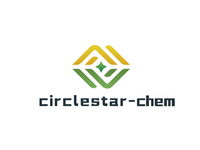Product Name: Erlotinib hydrochloride
Synonyms: ERLOTINIB HCL;ERLOTINIB HCL SALT;ERLOTINIB HCL SALT :TARCEVA;Erlotinib, Hydrochloride Salt;N-(3-Ethynylphenyl)-6,7-bis(2-methoxyethoxy)-4-quinazolinamine, Hydrochloride Salt, OSI 774, Tarceva;�N-(3-Ethynylphenyl)-6,7-bis-(2-methoxyethoxy)-quinazolin-4-amine;[6,7-Bis-(2-methoxy-ethoxy)-quinazolin-4yl]-(3-ethynyl-phenyl)-amine;Tarceva Hydrochloride�See E625000
CAS: 183319-69-9
MF: C22H24ClN3O4
MW: 429.9
EINECS: 620-491-0
Product Categories: Heterocycles;Intermediates & Fine Chemicals;Heterocyclic Compounds;anti-neoplastic;Pharmaceuticals;Anti-cancer&immunity;API;Molecular Targeted Antineoplastic;Tarceva;Antineoplastic;Inhibitors;183319-69-9
Erlotinib, launched as once daily oral treatment for patients with non-small-cell lung cancer (NSCLC), is an inhibitor of the epidermal growth factor receptor (EGFR) tyrosine kinase, and it is the second small-molecule drug to be marketed with this mechanism of action. Both erlotinib and its predecessor, gefitinib, are members of the anilinoquinazoline class of tyrosine kinase inhibitors. They compete with the binding of ATP to the intracellular tyrosine kinase domain of EGFR, thereby inhibiting receptor autophosphorylation and blocking downstream signal transduction. Erlotinib is prepared by the condensation of 3-ethynylaniline with 4-chloro-6,7-bis(2-methoxyethoxy)quinazoline, which is a key intermediate obtained in five synthetic steps starting from ethyl 3,4- dihydroxybenzoate. In vitro, Erlotinib inhibits purified human EGFR tyrosine kinase with an IC50 of 2 nM and blocks EGFR autophosphorylation in cellular assays with an IC50 of 20nM. Treatment of human colon cancer cells with erlotinib was associated with growth inhibition, G1 cell cycle arrest, and apoptosis

 China
China





